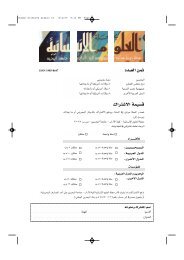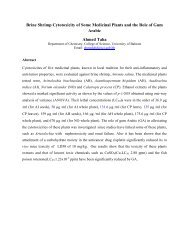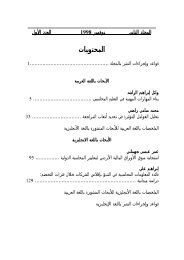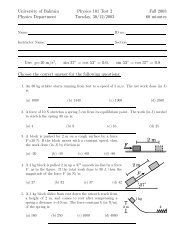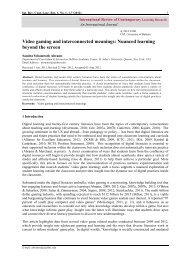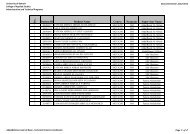Acid/Base Titrations
Acid/Base Titrations
Acid/Base Titrations
You also want an ePaper? Increase the reach of your titles
YUMPU automatically turns print PDFs into web optimized ePapers that Google loves.
EXPERIMENT 3<br />
Using Dilution Factors In An <strong>Acid</strong> –<strong>Base</strong> Titration& Analysis Of<br />
Vinegar<br />
Aim :<br />
1. To prepare diluted solutions of more concentrated solution.<br />
2. To determine an unknown concentration of Sodium<br />
hydroxide solution<br />
3. To determine the concentration of acetic acid in vinegar .
Introduction<br />
•When acids and bases are added together a neutralization reaction<br />
takes place. An acid and a base combine to produce water and salt.<br />
For example:<br />
Hydrochloric acid + Sodium hydroxide<br />
HCl + NaOH HOH + NaCl<br />
water + salt<br />
The acid donates a proton (H+) to the hydroxide (OH-) of the base<br />
to form water.
Titration method<br />
• Unknown amount of <strong>Base</strong> add to acid for<br />
titration.<br />
• Using buret – flask titration until the end<br />
point.<br />
• Report the volume used.
Indicators<br />
• Phenolphthalein<br />
• Methyl Red<br />
• Methyl orange<br />
Few drops to be used<br />
To see the colour change of the solutions to<br />
show the end point .
Procedure :<br />
A-Dilution:<br />
1- Diluted HCl :<br />
Pipette 4.0 ml of the stock 1.00M HCl into 100.0ml v.flask<br />
Add distilled water to the mark100.0 ml<br />
M 1 X V 1 = M 2 X V 2<br />
1.00M X 4.0 ml = M 2 X 100.0ml M 2 = 0.04 mol / L
2- Diluted NaOH :<br />
Pipette 10.0 ml of stock (concentrated) sodium hydroxide into 100.0 ml<br />
v.flask. Add distilled water to the mark 100.0 ml
B-Titration of HCl & NaOH:<br />
1-Fill the burette with diluted NaOH Solution. Be certain to<br />
open the stopcock and allow a few ml to flow out.<br />
2-Record the initial volume of NaOH.
3-Measure 10.0 ml of diluted HCl in a conical flask using a<br />
pipette.<br />
.
4- Add 2 to 3 drops of phenolphthalein to the HCl solution and<br />
swirl it thoroughly.
5-Stop the titration when the first appearance of pink colour<br />
is observed.
6-Record final volume of the burette.<br />
7-Repeat the titration steps three times.
C.Analysis of vinegar:<br />
1-Pipette 5.0ml of stock vinegar solution into a 100.0ml volumetric flask.<br />
Add distilled water to make 100.0 ml and mix the solution.
2-Pipette 10.0 ml of diluted vinegar solution to a 250.0 ml conical<br />
flask.
3- Add 2-3 drops of phenolphthalein to the vinegar solution.
4-Titrate the vinegar solution with the same NaOH solution used<br />
before.
5-Stop the titration when when the first appearance of pink colour is<br />
observed.
6-Record the final volume of the burette.<br />
7-Repeat the titration steps three times.
Q-1 What is the unit of volume on a<br />
burette?<br />
Q-2 What is the maximum volume<br />
that can be measured with our<br />
burettes?
• Gently pull the tip off and rinse it out also.
How to use the burette properly<br />
• The burette with the red dot must be used for<br />
acids and the burette with the blue dot must be<br />
used for bases.<br />
• Fill your burettes to approximately 30 mL. Be sure<br />
there are no air bubbles in the tip of your burette.<br />
Record your beginning volumes on your paper.<br />
• To read the meniscus you must be at eye level,<br />
and read at the bottom line of the dip.
• Holding a white card with a black line<br />
behind the burette can be very helpful<br />
•Each line on our burette represents 1/10 of a mL so<br />
be sure to estimate your readings to .01 mL
Q-3 What is the reading here?
• To release liquid turn, the stopcock. Be<br />
careful to not pull out on the stopcock as<br />
you turn it.
In a titration with this ratio we can use the<br />
following relationship<br />
M a x V a = M b x V b<br />
molarity of acid x volume of acid = molarity of base x volume of base
In titration, one of the solution is standard<br />
solution, which has know concentration.<br />
From the measured volume of the other<br />
solution by titration, the concentration of the<br />
second solution can be calculated.
• The indicator phenolphthalein is used to<br />
tell when the acid and base exactly<br />
neutralize each other. This is called the<br />
endpoint of the titration.<br />
• When phenolphthalein is added to an acid<br />
it remains clear. When it is added to a base<br />
it turns pink
• As liquid is added to the Erlenmeyer flask<br />
always swirl gently
• The endpoint of a titration is shown by a<br />
light pink color that stays for at least 30<br />
seconds
• Record the beginning volumes of acid and base. Also record the molarity of the acid.<br />
• Add approximately 10 ml of acid to the flask and begin to add base.<br />
• The first time through a titration we add the base quickly to turn the solution pink. You can<br />
then a small amount of acid and then titrate to the light pink endpoint.
• When you are close to the endpoint you<br />
often need to add very small amounts of<br />
acid or base. To do this, turn the stopcock<br />
just enough to have 1 small drop of liquid<br />
hanging from the bottom of the buret.
• The key to a successful titration is patience!<br />
• Always use clean equipment<br />
• Remember to record your beginning and ending volumes and read to .01 mL<br />
• Read the meniscus correctly<br />
• Use the formula M a x V a = M b x V b for a 1:1 mole ratio to calculate the concentration of your unknown solution<br />
Good Luck



